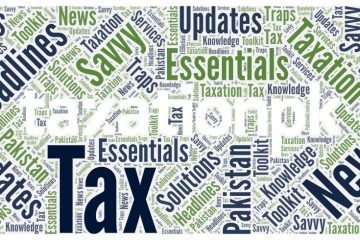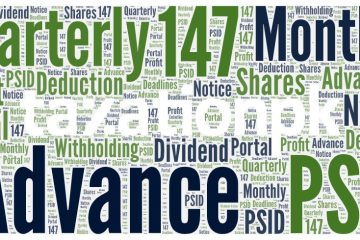Learn how service providers in Pakistan (doctors, lawyers, engineers & more) can easily file income tax returns with FBR. Step-by-step guide!
Filing income tax returns for service providers in Pakistan. Whether you are a doctor, engineer, lawyer, electrician, taxi driver, or any individual offering your skills as a service, this guide is for you.
Service providers are unique in that they sell their expertise and skills, rather than tangible goods. Think about it: when you visit a doctor, you’re paying for their medical knowledge and diagnostic abilities. Similarly, a lawyer provides legal expertise, and an engineer offers technical skills. Understanding how to properly declare income and file tax returns is essential for all service providers to comply with Pakistani tax laws.
This article will walk you through the process, drawing from the step-by-step instructions demonstrated in my video on navigating the Federal Board of Revenue (FBR) website. We will focus on filing income tax returns specifically for service providers.
Navigating the FBR Website and Logging In
The first step is to access the official FBR website. Once there, locate Declaration tab from the Income Tax Returns System (IRS) is responsible for managing income tax matters. Click to open the IRS website.
To begin filing your return, you will need to log in using your Registration Number, which is your Computerized National Identity Card (CNIC), and your password. Enter these details carefully to access your account.
Filing Your Tax Return: The ‘Normal Return’
After successfully logging in, you will find the option to submit a “Normal Tax Return.” Click on this option to proceed. You will then be prompted to select the Tax Period. For the current official year, select 2024, which corresponds to the tax year spanning from July 1st, 2023, to June 30th, 2024. Click “Continue” to proceed.
Declaring Your Income as a Service Provider
Upon opening the tax return form, you will see various sections. As a service provider, you will navigate to the “Business” section and then select “Other Revenue.”
Within “Other Revenue,” you will find options such as “Fee for Technical and Professional Services.” While this option might seem relevant for doctors, engineers, and lawyers providing professional services, for a more comprehensive approach covering various service types, you can also use “Others.”
Under “Others,” you can declare your total income earned during the tax year. For example, if you earned PKR 900,000, you would enter this amount in the designated field. The system will then calculate your potential taxable charges.
Accounting for Business Expenses
It’s important to remember that service providers, like any business, incur expenses in the course of their work. To accurately calculate your taxable income, you need to deduct these legitimate business expenses.
Navigate back to the “Business” section and then go to “Management, Administration, Selling and Financial Expenses.” This is where you will detail your operational costs.
Consider common expenses for service providers:
- Rent: If you operate from a rented space (clinic, office, etc.), declare the annual rent paid.
- Salaries: If you employ staff (assistants, clerks, etc.), declare the total salaries paid annually. For instance, if you pay a minimum wage employee PKR 420,000 annually, enter this amount.
- Utilities: Include expenses like electricity bills, communication costs, and repairs.
- Office Expenses: Account for office equipment, stationery, and other indirect expenses. If you don’t have detailed records for every category, you can consolidate these under “Other Indirect Expenses.”
By accurately detailing these expenses, you reduce your taxable income, ensuring you only pay tax on your net earnings.
Tax Calculation, Payment, and Adjustable Taxes
After declaring your income and expenses, the system will automatically calculate your taxable income and generate the applicable tax amount. You can then proceed to generate a Payment Slip ID (PSID) to pay your tax.
Furthermore, it’s crucial to understand “Adjustable Taxes.” If you have already paid taxes in advance, such as withholding tax on cellphone bills or other services, you can adjust these against your total tax liability. By providing details and relevant tax certificates, you can reduce your overall tax burden or even receive a refund if you have overpaid.
Declaring Business Assets
Navigate to “Business Assets” under the “Business” section. This section requires you to declare the capital assets used in your service provision. These can include:
- Office: If you own your office space, declare its value.
- Furniture & Equipment: Include the value of furniture, equipment, and tools used in your service provision. For example, a lawyer might declare the value of office furniture and law books.
Accurately declaring your business assets provides a clear picture of your business’s financial standing.
Wealth Statement: Personal Expenses and Assets
The next critical step is to complete the “Wealth Statement.”
-
Personal Expenses: This section requires you to declare your household expenses. Include items like rent for your residence, vehicle maintenance, travel costs, utility bills, and other household running costs. While detailed records are ideal, you can estimate reasonable figures.
-
Personal Assets: Declare your personal assets, which may include:
- Property: Agricultural, residential, or commercial properties, providing addresses, size (e.g., marlas), and values.
- Business Capital: Link to the business assets declared earlier.
- Bank Accounts: Declare bank account details, including IBAN numbers, bank names, and cash balances.
- Vehicles: Provide details of motor vehicles, including registration numbers and values.
- Valuables: Declare valuable possessions and cash in hand.
The goal of the Wealth Statement is to reconcile your declared income and expenses with your assets, ensuring transparency and compliance.
Final Submission and Important Considerations
Once you have meticulously filled out all sections, including business details, income, expenses, assets, and wealth statement, you can proceed to save the form. Before final submission, ensure you review all details for accuracy.
To submit, click the “Submit” button. The system will prompt you to enter your PIN. If you have forgotten your PIN, you can use the “Change PIN” option to reset it.
Before submitting your tax return, it is highly recommended that you:
- Consult the official FBR website: Familiarize yourself with the latest tax laws, rules, guidelines. The FBR website is the definitive source of information.
- Seek Professional Advice: Consider consulting a tax advisor or consultant for personalized guidance based on your specific financial situation.
- Do Proper Working: Carefully calculate your income, expenses, and tax liabilities.
Submitting inaccurate information or failing to understand tax regulations can lead to complications. Take the time to research, understand the rules, and seek professional help when needed.
Filing your income tax return as a service provider is a responsible and necessary step. By following these guidelines, conducting thorough research, and seeking professional advice when needed, you can navigate the process effectively and ensure compliance with Pakistani tax laws.




